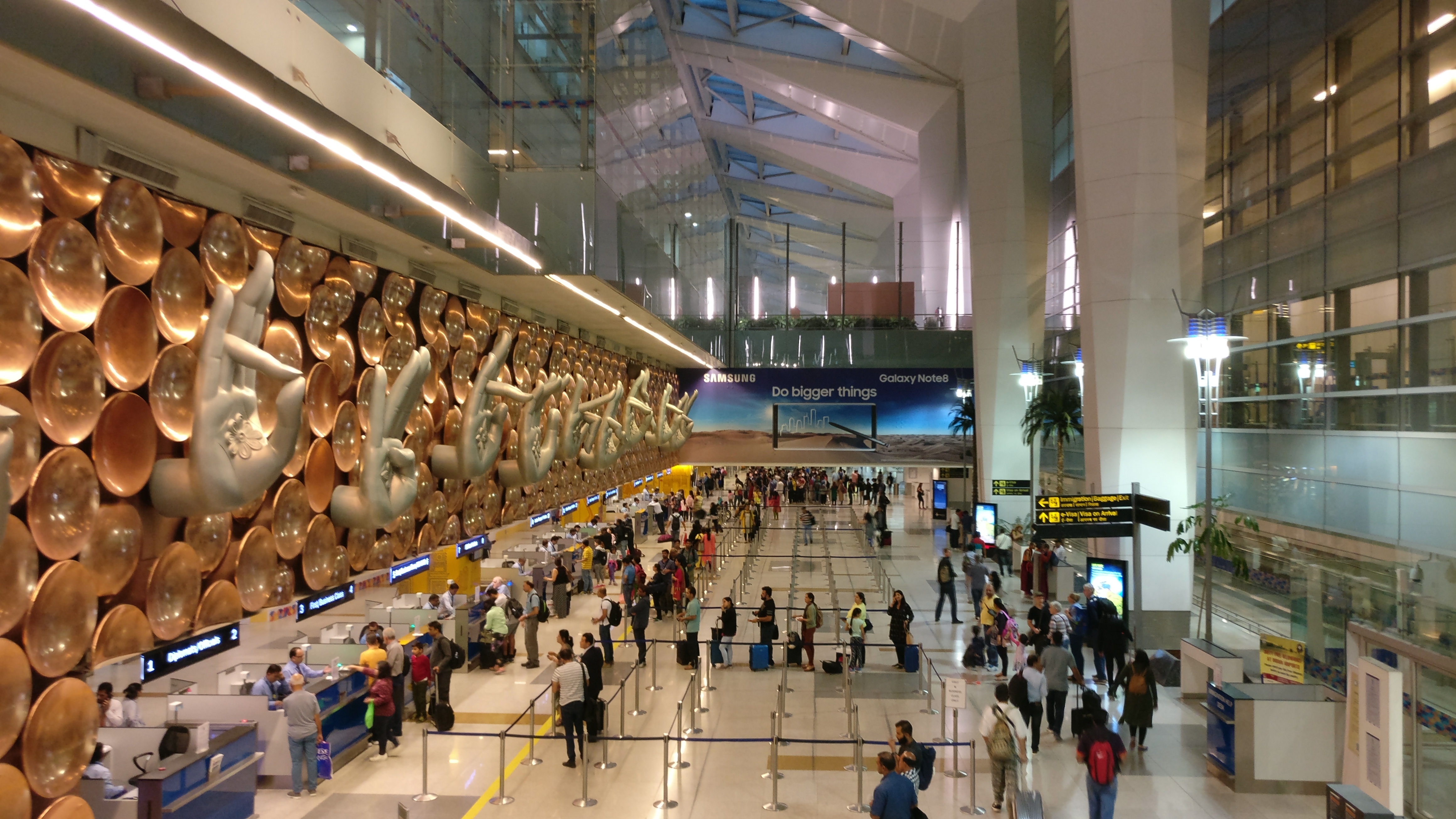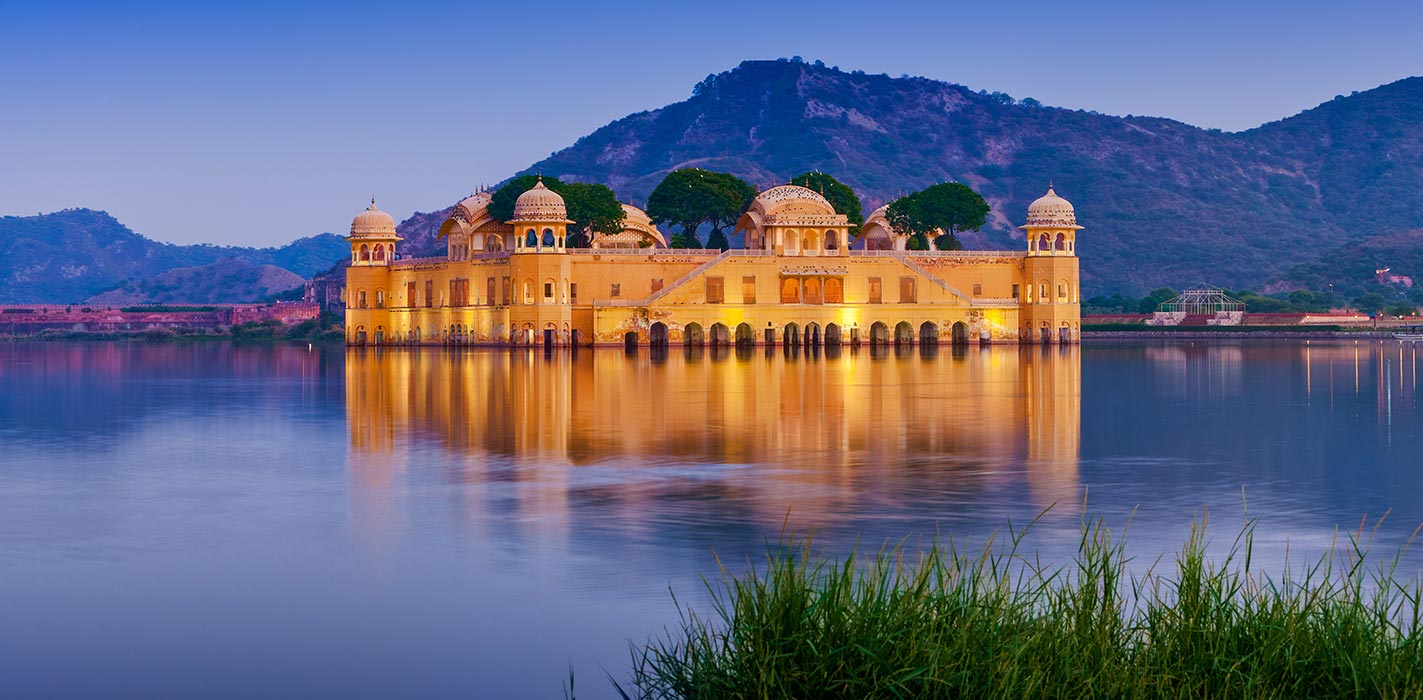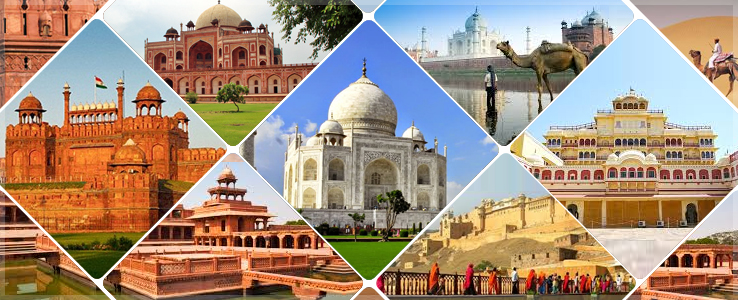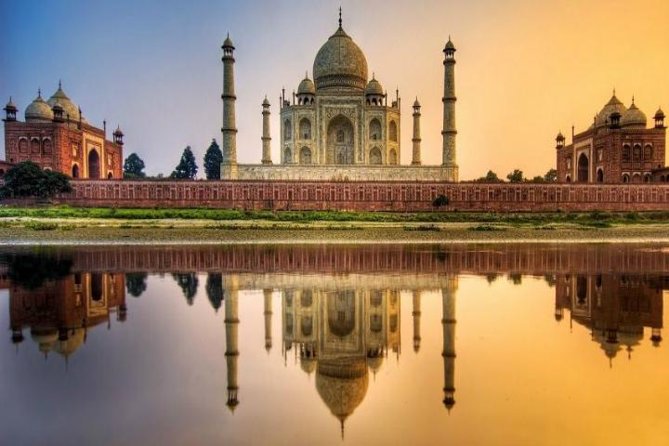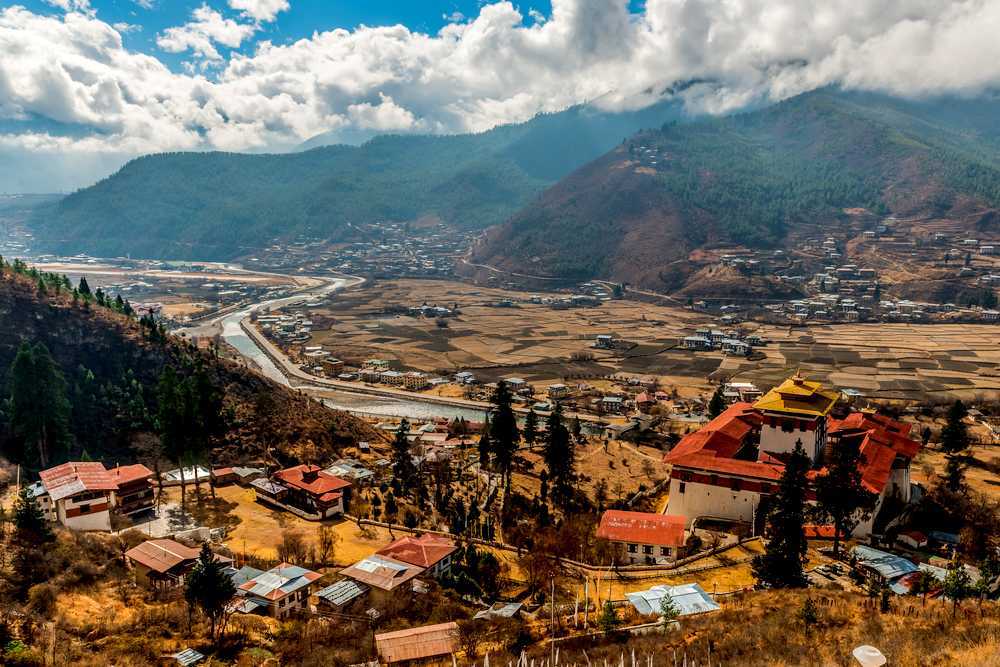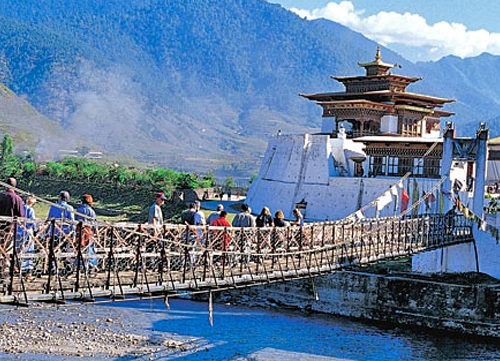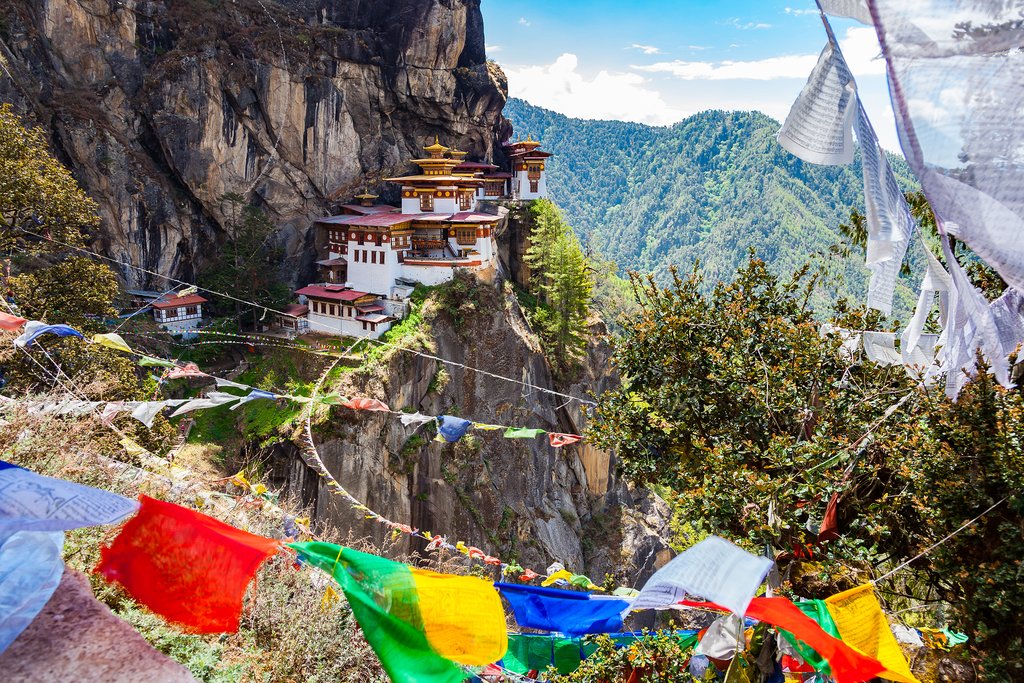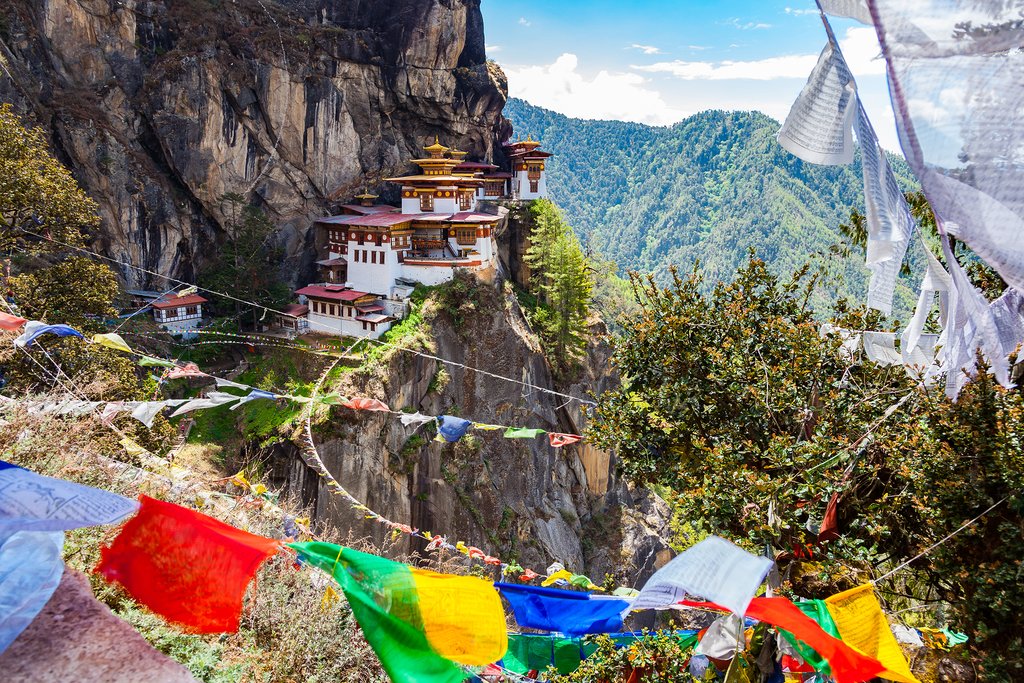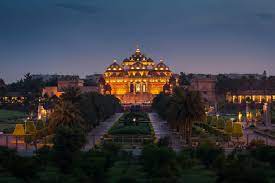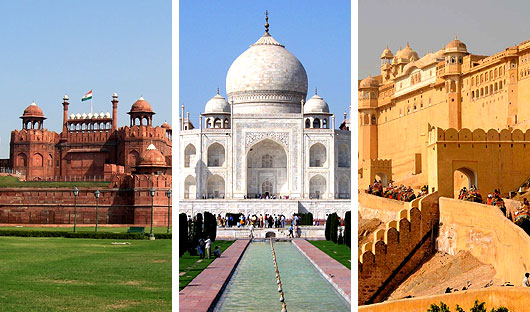Golden Triangle Tour With Bhutan
Route : Delhi Jaipur Agra Delhi Paro Thimphu Punakha Paro Delhi
12 Days 11 Nights
Overview
Golden Triangle Tour With Bhutan
Location Map
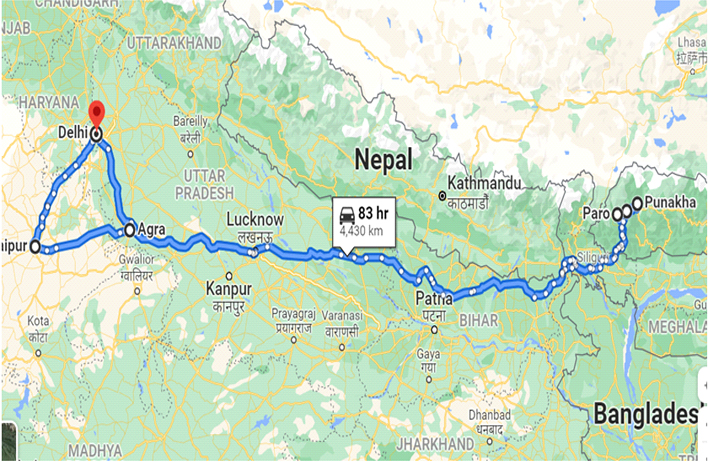
Itinerary
-
1Day 1 : Arrive Delhi
Meeting and assistance upon arrival at Delhi International airport and transfer to hotel. Check in time 1400 HRS. Proceed for sightseeing of Old & New Delhi. Visiting Jama Masjid, Raj Ghat and drive past to Red Fort. Continue the sightseeing tour of New Delhi with drive past India Gate, President & Parliament House, Visit the Qutab Minar, 72 meters high and the ruins of Quwat-ul- Eslam (Light of Islam) Mosque. Overnight stay at the hotel.
-
2Day 2 : Delhi –Jaipur by surface 269 Kms/5 Hrs
Breakfast at hotel Morning depart by surface for Jaipur, upon arrival check into hotel. Balance day at leisure. Overnight at the hotel.
-
3Day 3 : Jaipur
Breakfast at hotel. After breakfast excursion to Amber fort by Jeep; Amber is a classic, romantic Rajasthani Fort Palace. The rugged, time-ravaged walls of the Fort may not look beautiful from the outside, but the interior is a virtual paradise. Miniatures painted on the walls depict hunting and war scenes, apart from festivals. Precious stones and mirrors are embedded into the plaster. Inside the Fort visit the Jag Mandir or the Hall of Victory. Inside the Jag Mandir is the famed Sheesh Mahal - a room with all the four walls and ceiling completely embedded with glittering mirror pieces, which were specially imported from Belgium during that period. Enroute to Amber Fort, you will have a brief photography stop at Hawa Mahal - the Palace of Winds. Afternoon city tour begins with a visit to the Maharaja's City Palace, the former Royal residence, part of it converted into a museum. A small portion is still used by the Royal family of Jaipur. Built in the style of a fortified campus, the palace covers almost one-seventh in area of the city. One of the major attractions in the museum is the portion known as Armoury Museum housing an impressive array of weaponry-pistols, blunderbusses, flintlocks, swords, rifles and daggers. The royal families of Jaipur once used most of these weapons. Later visit the Jantar Mantar, which is the largest stone and marble crafted observatory in the world. Situated near the gate of the city palace, the observatory has 17 large instruments, many of them still in working condition. Overnight at the hotel.
-
4Day 4 : Jaipur- Agra by surface 237 Kms / 6-7 Hrs.
After breakfast depart by surface for Agra en route visiting Fatehpur Sikri. The deserted city of Fatehpur Sikri was built by Emperor Akbar in 1569, in honour of the great Saint Sheikh Salim Chisti who blessed Akbar and prophesized the birth of three sons to the heirless Emperor. Akbar used Fatehpur Sikri as his capital and the city was fully occupied for 14 years but slowly became deserted and ruined after Akbar left the city. Scarcity of water was the prime factor for the abandonment of this beautiful city. After visit continue drive to Agra, upon arrival check in at hotel. Overnight at the hotel.
-
5Day 5 : Agra- Delhi by surface 205 Kms/4 Hrs
Breakfast at hotel. Morning visit the Agra fort containing the halls private and public audiences and other palaces. Later visit the world famous Taj Mahal built by Shah Jahan in 1630 for his queen Mumtaz Mahal to enshrine her mortal remains. This architectural marvel is a perfectly proportioned masterpiece fashioned from white marble that stands testimony to the skill of 20,000 craftsmen brought together from Persia, Turkey, France and Italy and who took 17 years to complete this 'Love Poem in Marble'. (Taj Mahal is closed on Fridays). Later in time continue drive to Delhi , upon arrival check in at hotel. Overnight at the hotel
-
6Day 6 : Delhi – Paro by flight Paro –Thimphu by surface 55 Kms/1 ½ Hrs
Breakfast at hotel In time transfer to airport to board the flight to Paro is one of the most spectacular in the entire Himalayas and offers one of the greatest arrivals anywhere during the decent to Paro Airport. Stepping out of the aircraft, the first impressions of Bhutan are the cool fresh air and deep blue skies. You will be received by our representative . The short transfer to Thimphu, the capital town of Bhutan, leads through the Paro valley to the confluence of Paro and Thimphu rivers at Chuzom (confluence). On arrival, in Thimphu check-into the hotel . If Time permits visit . Memorial Chorten: The stupa built in the memory of Bhutan's third King, His Late Majesty, King Jigme Dorji Wangchuk, who is popularly regarded as Father of modern Bhutan. The paintings and statues inside the monument provide a deep insight into Buddhist philosophy. Buddha Point (Kuensel Phodrang). Located just a short drive from Thimphu city center, visitors can get a good overview of the Thimphu valley from the Buddha point (Kuensel Phodrang). You can pay your obeisance and offer prayers to the Buddha, the largest statue in the country and then walk around and take a glimpse of the valley. Conclude the tour of the day with a visit of Trashichhoedzong, “fortress of the glorious religion”. This is the center of government and religion, site of monarch’s throne room and seat of Je Khenpo or Chief Abbot. Built in 1641 by the political and religious unifier of Bhutan, Shabdrung Ngawang Namgyal, it was reconstructed in 1960s in traditional Bhutanese manner, without nails or architectural plans. Overnight at the hotel in Thimphu.
-
7Day 7 : Thimphu-Punakha by surface 70 Kms/3 Hrs
After breakfast proceed for a guided tour of the city’s main highlights: Textile Museum: is worth a visit to experience the living national art of weaving. Exhibitions introduce the major weaving techniques, styles of local dress and textiles made by women and men. National Library: The history of Bhutan lies imprinted in archaic texts, which are preserved at the National Library. Besides thousands of manuscripts and ancient texts, the library also has modern academic books and printing blocks for prayer flags. Institute for Zorig Chusum: Commonly known as Arts & Crafts School or Painting School, the Institute offers a six-year course on the 13 traditional arts and crafts of Bhutan. On a visit, one can see students learning the various skills taught at the school. Simply Bhutan Museum: The newly commissioned museum depicts ancient Bhutanese architecture, which is slowly being lost to modernization. The uniqueness of the structure is in its composition of the materials used. The structure is built reusing old timber, window and door frames and other items from traditional and old demolished houses. One highlight is the portrayal of the age-old life styles of the Bhutanese people. After lunch drive up to Dochu-la pass (3,088m/ 10,130 ft) stopping briefly here to take in the view and admire the chorten, mani wall, and prayer flags which decorate the highest point on the road. If skies are clear, the following peaks can be seen from this pass (left to right): Masagang (7,158m), Tsendagang (6,960m), Terigang (7,060m), Jejegangphugang (7,158 m ), Kangphugang (7,170 m ), Zongphugang (7, 060 m ), a table mountain that dominates the isolated region of Lunana - finally Gangkar puensum, the highest peak in Bhutan at 7,497m. At Dochula Pass, 108 chortens or stupas known as Druk Wangyal Chortens have been built by Ashi Dorji Wangmo Wangchuk, the eldest Queen Mother. These chortens are built in three layers, the first lowest level layer has forty five chortens, the second has thirty six and the top layer has twenty seven, built around the main chorten. Then explore some part of Royal Botanical Park : It is the first botanical park in Bhutan and forms the backdrop of the Dochula Pass. Further Drive on to Punakha Overnight at the hotel in Punakha.
-
8Day 8 : Punakha
Morning after breakfast visit Punakha Dzong, built strategically at the junction of Pho Chhu and Mo Chhu rivers in 1637 by Shabdrung Ngawang Namgyal to serve as the religious and administrative centre of the region, Punakha Dzong has played an important role in Bhutan’s history. Damaged by four catastrophic fires and an earthquake, the Dzong has been now fully restored. Punakha Dzong visit is followed by a walk to Richengang village : Richengang village, this is one of the oldest villages in Bhutan with traditional architecture and delightful local people in a remote corner of sleepy Punakha valley where an ancient way of life has remained unchanged for generations and most of villagers still work at as stonemasons and original craftsmen of dzongs (fort cum monastery) and lhakhans (temples). Walk into a local farmer or stonemason house at Richengang village, peep into the daily life and lifestyle of the villagers. Bhutanese farm houses are very colorful, decorative and traditionally built without the use of nail. The majority of the population of Bhutan continues to live as it has for centuries – in small isolated farms and hamlets, surrounded by terraced fields of rice, maize and buckwheat. Later in the day after lunch excursion to ChimiLhakhang (from hotel it is about 15 minutes drive till motorable road and then walk starts through paddy fields and villages. This is total about 1.1/2 hour walk, including both way). The ChimiLhakhang, situated on a hillock in the centre of the valley, also known as the temple of fertility. It is widely believed that couples who do not have children and wanting one, if they pray at this temple, they are usually blessed with a child very soon. The trail leads across rice fields to the tiny settlement of Pana, meaning ‘field’. A walk through the village near the temple will give you rare glimpses into the daily life and lifestyle of the villagers Overnight at the hotel in Punakha.
-
9Day 9 : Punakha-Paro by surface 125 Kms/4 Hrs
After breakfast depart to Paro, the road climbs steeply through a forest of pine and cedar, festooned with hanging lichen high up near Dochula pass (3,080 m). This pass often offers panoramic views of the Himalayan mountain ranges. After stopping for tea and the view, we descend along a series of hairpin bends to river valley. En route visit Simtokha Dzong, the place of profound tantric teaching, this dzong now houses a school for the study of the Dzongkha language. On arrival check hotel Later in the day set out on an exploratory excursion in around Paro valley. Paro (2,280m) - The beautiful valley of Paro encapsulates within itself a rich culture, scenic beauty and hundreds of myths and legends. It is home to many of Bhutan's oldest temples and monasteries, National Museum and the country's only airport. Mount. Chomolhari (7,314m) reigns in white glory at the northern end of the valley and its glacial water plunge through deep gorges to form Pa Chhu (Paro river). Paro is also one of the most fertile valleys in the Kingdom producing a bulk of the locally famous red rice from its terraced fields. Visit Ta Dzong, originally built as a watchtower, which now houses the National Museum. The extensive collection includes antique thangkha paintings, textiles, weapons & armor, household objects and a rich assortment of natural and historic artifacts. Then walk down the trail to visit Rinpung Dzong, meaning (“fortress of the heap of jewels”), which has a long and fascinating history. Along the wooden galleries lining the inner courtyard are fine wall paintings illustrating Buddhist lore such as four friends, the old man of long life, the wheel of life, scenes from the life of Milarepa, Mount. Sumeru and other cosmic Mandala. Overnight at the hotel in Paro.
-
10Day 10 : Paro
After breakfast take a short drive to Satsam Chorten, stop en route at the 7th century Kyichu Lhakhang, one of the 108 temples built in the Himalayas by Tibetan King, Songtsen Gampo. The building of this temple marks the introduction of Buddhism in Bhutan. On arrival at trail-head point, embark on a walking excursion to Taktshang Monastery: It is one of the most famous of Bhutan’s monasteries, perched on the side of a cliff 900m above the Paro valley floor. It is said that Guru Rinpoche arrived here on the back of a tigress and meditated at this monastery and hence it is called ‘Tiger’s Nest’. This site has been recognised as a most sacred place and visited by Shabdrung Ngawang Namgyal in 1646 and now visited by all Bhutanese at least once in their lifetime. On 19 April, 1998, a fire severely damaged the main structure of building but now this Bhutanese jewel has been restored to its original splendour. Lunch at the famous Taktsang cafeteria overlooking the Tiger’s nest hanging on to the Cliffside. On the way back to town stop at Drukgyel Dzong, a ruined fortress where Bhutanese warriors fought Tibetan invaders centuries ago. The snowy dome of sacred Chomolhari, "mountain of goddess'' can be seen in all her glory from the approach road to the Dzong. Evening an exploratory walk around main street and market area.. Dinner and overnight in Paro .
-
11Day 11 : Paro – Delhi by flight Leave Delhi
Breakfast at hotel In time transfer to airport to board the flight to Delhi. Meeting and assistance on arrival and proceed with evening visit of Akshardham Temple 'Akshardham' means the divine abode of God. It is hailed as an eternal place of devotion, purity and peace. Swaminarayan Akshardham at New Delhi is a Mandir – an abode of God, a Hindu house of worship, and a spiritual and cultural campus dedicated to devotion, learning and harmony. (Closed on Monday ). Later checkin at hotel. Overnight at hotel.
-
12Day 12 : Leave Delhi
Breakfast at hotel Check out time 12 noon. In time transfer to airport to connect flight for onward destination.
